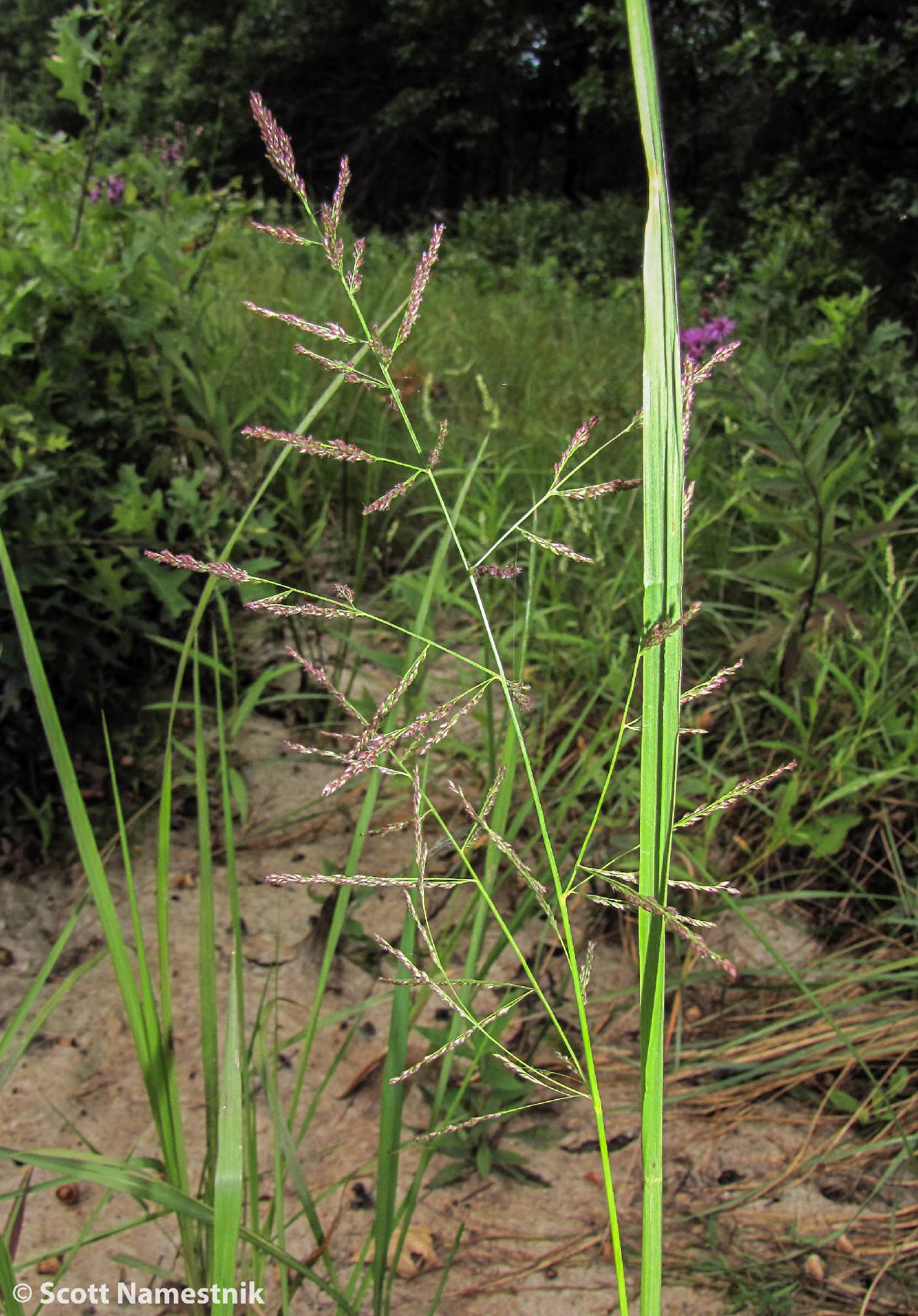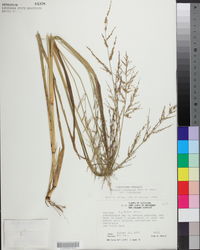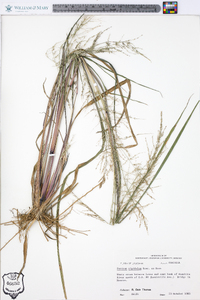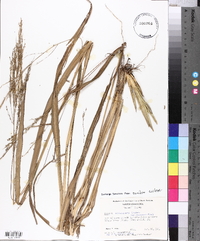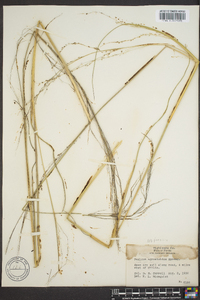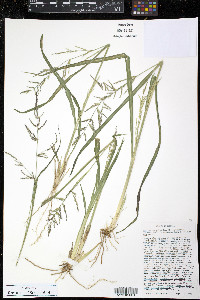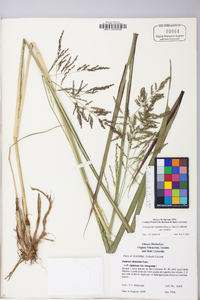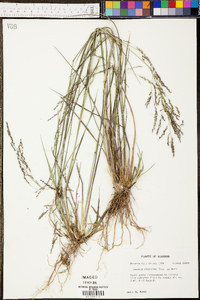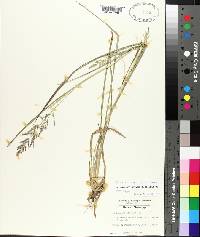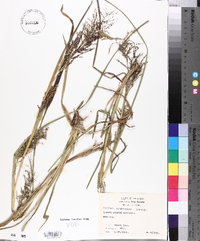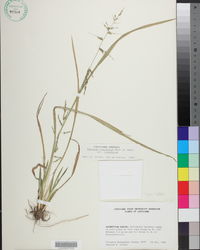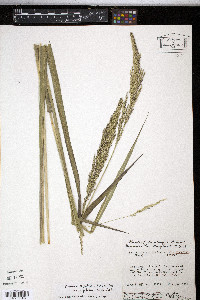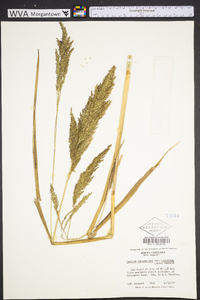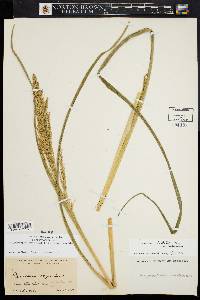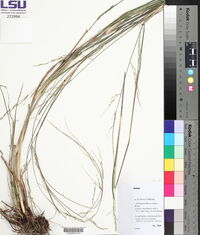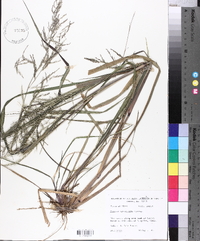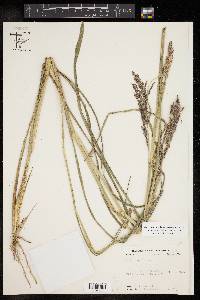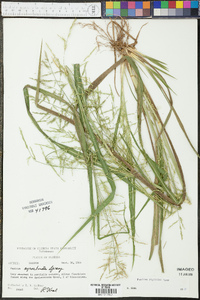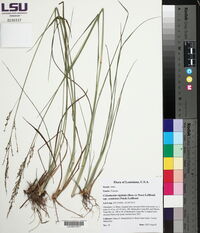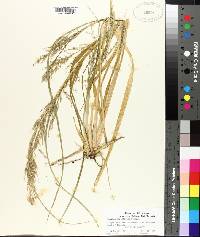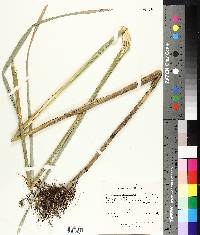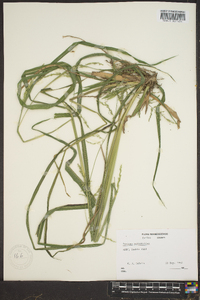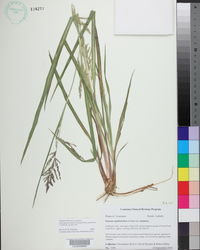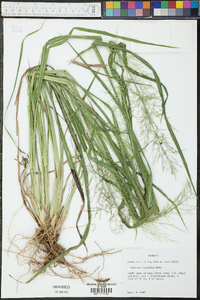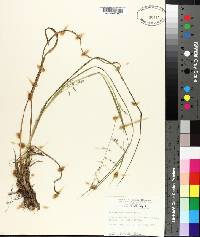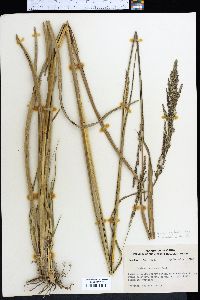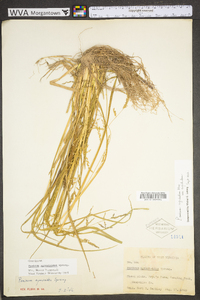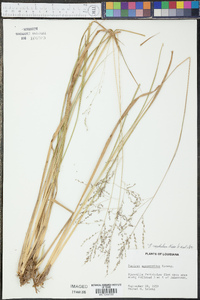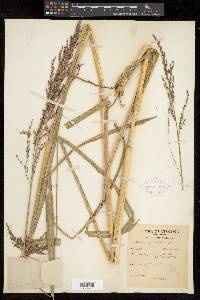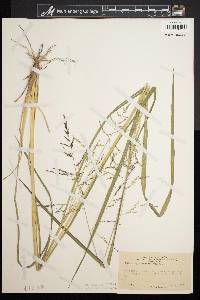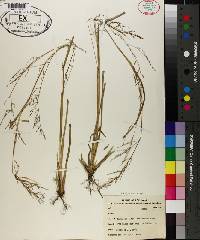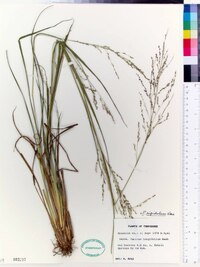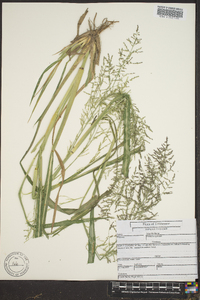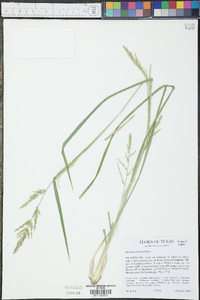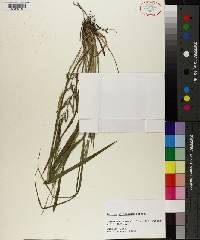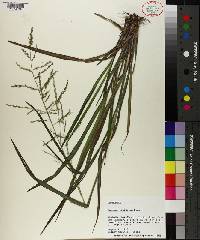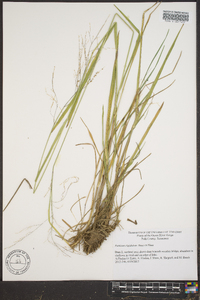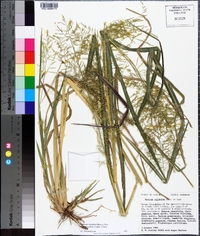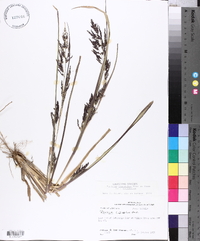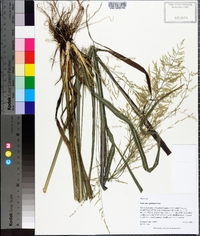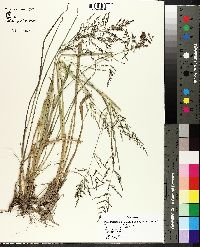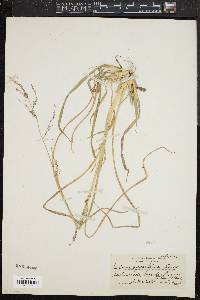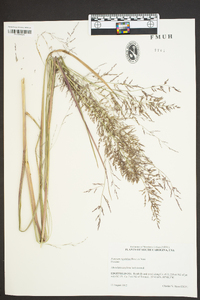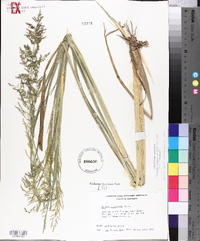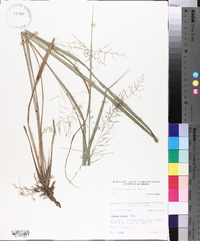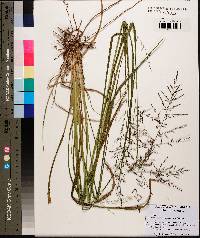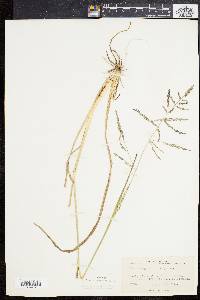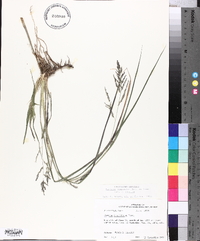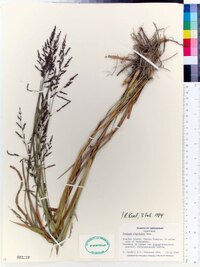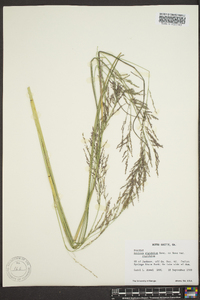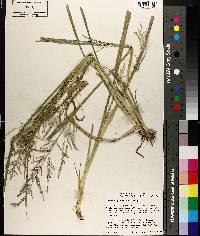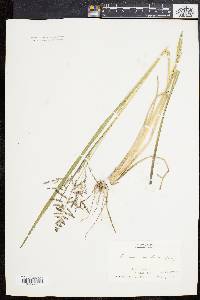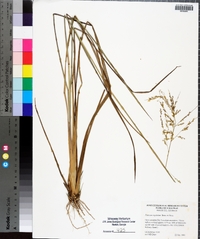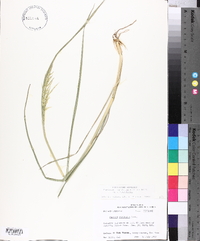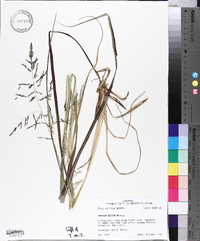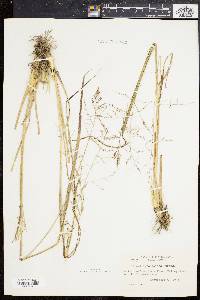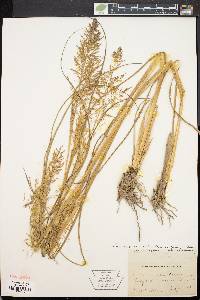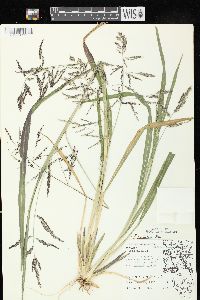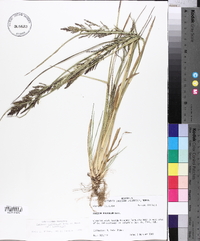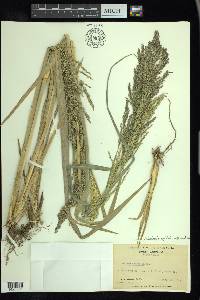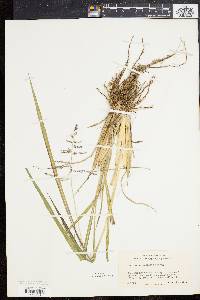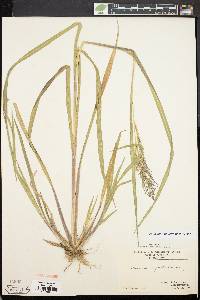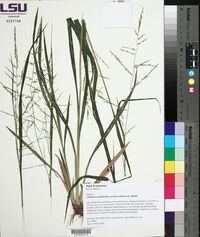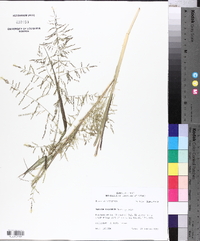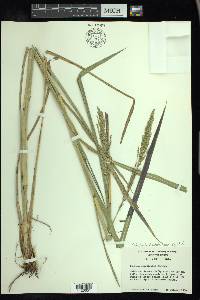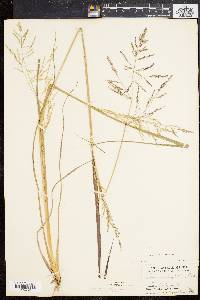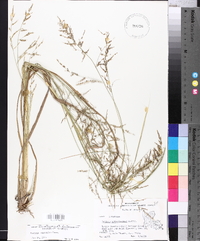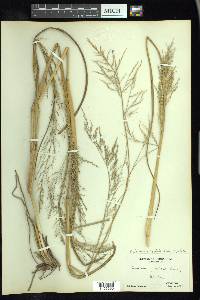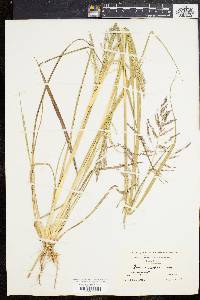
|
|
|
|
Family: Poaceae
Red-Top Cut-Throat Grass
[Panicum agrostoides Spreng., morePanicum agrostoides var. agrostoides , Panicum rigidulum Bosc ex Nees, Panicum rigidulum rigidulum] |
Perennial herb, tufted 35 cm - 1.5 m tall Leaves: alternate, two-ranked. Sheaths keeled or compressed. Ligules to 3 mm long, membranous, erose (appearing unevenly cut or incised) along the margins or fringed with hairs. Blades 8 cm - 0.5 m long, 2 - 12 mm wide, folded or flat, parallel-veined, smooth or minutely rough, sometimes sparsely softly hairy basally. Inflorescence: a dense, branched arrangement of spikelets (panicle), terminal and axillary, 9 - 40 cm long, one-third to three-fourths as wide as long. Fruit: a caryopsis, indehiscent, enclosed within the persistent lemma and palea. Culm: stout, 35 cm - 1.5 m long, compressed. Spikelets: nearly stalkless, green and tinged purple or purple, 1.5 - 4 mm long, lance-shaped. Glumes: unequal, herbaceous. Lower glumes to three-fourths as long as spikelets, three-veined, midveins keeled. Upper glumes nearly equal to or slightly longer than lower lemmas, often spreading slightly apart at the apex, minutely rough at the apex, five-veined, midvein keeled. Lemmas:: Lower lemmas similar to and nearly equal to or slightly shorter than upper glumes, often spreading slightly apart at the apex, minutely rough at the apex, five-veined, midvein keeled. Upper lemmas clasping upper paleas for all their length, stiff, thick, shiny, with rolled-up margins on the upper surface. Paleas:: Lower paleas small, to two-thirds as long as lower lemmas, transparent. Upper paleas longitudinally lined. Florets:: Lower florets sterile. Upper florets bisexual, sometimes stalked, 1.5 - 2 mm long, 0.5 - 1 mm wide, to three-fourths as long as spikelets, pointed at the apex, shiny, with a tuft of minute hairs at the apex. Anthers three. Stigmas red. Similar species: No information at this time. Flowering: June to October Habitat and ecology: Moist to wet areas. Occurence in the Chicago region: native Etymology: Panicum comes from the Latin word panis, meaning bread, or panus, meaning "ear of millet." Rigidulum means "somewhat rigid." Author: The Morton Arboretum Coarse, densely tufted perennial to 1.5 m; lvs mostly crowded toward the base; sheaths glabrous, strongly compressed; ligule short, membranous, erose; blades narrow, 2-4 dm, sometimes exceeding the panicle, scaberulous on the margin; panicle 1-3 dm, pyramidal or narrow, its branches scabrous; spikelets lance-ovoid, green to purple, 1.8-3 mm, on pedicels half to twice as long; glumes and sterile lemma shortly to long-acuminate, sharply veined and somewhat keeled; first glume half to two-thirds as long as the spikelet; second glume and sterile lemma subequal, conspicuously longer than the often shortly stipitate fr; 2n=18. Wet soil; Me. to Mich., s. to Fla. and Tex. (P. agrostoides; P. condensum; P. stipitatum) Gleason, Henry A. & Cronquist, Arthur J. 1991. Manual of vascular plants of northeastern United States and adjacent Canada. lxxv + 910 pp. ©The New York Botanical Garden. All rights reserved. Used by permission. |
This project was made possible in part by the Institute of Museum and Library Services [MG-70-19-0057-19].
Powered by Symbiota

